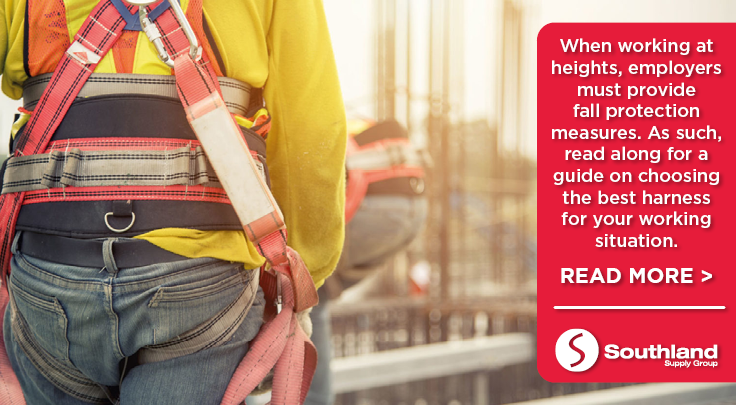
Falls from heights are one of the most common causes of serious work-related injuries, particularly in industries such as construction. To keep workers safe at height, it is recommended to equip any worker exposed to vertical drops of six feet or more with a safety harness system. However, with all the options available on the market, how do you know which harness is right for you?
Before purchasing a safety harness, whether it is a full-body harness or other types of fall protection, keep in mind that not all are the same. Everything from harness construction to strap placement can be different from harness to harness, and all these factors make a big difference to the comfort and safety of the user.
Here are some factors and features to consider when choosing a safety harness:
- Application-specific safety harness - Different types of work environments and tasks require safety harnesses that match the needs of that specific application. For instance, a safety harness manufactured for climbing purposes is designed to put less weight on the user and generally comes with a fall protection rescue kit. On the other hand, harnesses that have been designed for welding purposes would feature components like heat-resistant fabric.
- Durability - Workers who spend long periods of time in their harness should use one that is durable enough to handle extensive use. For example, safety harnesses made of Kevlar or coated with Polyurethane, and with padded straps and suspension trauma straps. Workers who only wear a safety harness for short stints during their typical workday can generally use a simple safety harness with basic comfort and safety features.
- Comfort - The highest quality fall safety harnesses are designed to maximise comfort and functionality. They offer extra padding and an ergonomic fit that increases productivity and reduces worker discomfort. This limits the potential for injury, as the harness is more likely to be fitted correctly, making these a great investment for employers.
- Webbing – The webbing technology has improved greatly. Depending on the user’s working environment, the characteristics of the webbing of a safety harness can make a difference. Modern harnesses offer options such as liquid-resistant webbing, paint-resistant coatings, and even heat-resistant webbing for welders and electricians.
- D-ring configuration – A fall safety harness’ D-Ring is usually fitted on the back, but it depends upon the application. For instance, workers who are using a vertical climbing system or fixed ladder should have the harness attachment in the front so that they can climb safely.
With many advancements in fall-protection equipment and increased awareness of the need to preserve the safety of workers at height, a wide range of options for safety harnesses is now available.
Southland Supply Group
With decades of experience in the safety equipment sector, Southland Supply Group understands what it takes to keep workers safe on the job. We are proud to provide a great range of durable and reliable fall protection equipment that can help increase safety when working at height while ensuring you’re complying with all the relevant health and safety regulations.
Southland’s range of fall protection equipment includes full-body harnesses, fall protection kits, karabiners & connectors, lanyards, pole straps & equipment belts, descent units, and much more. For any inquiry about our products, get in touch with us at 1800 77 22 91 or send us an email at webstore@southland.com.au
